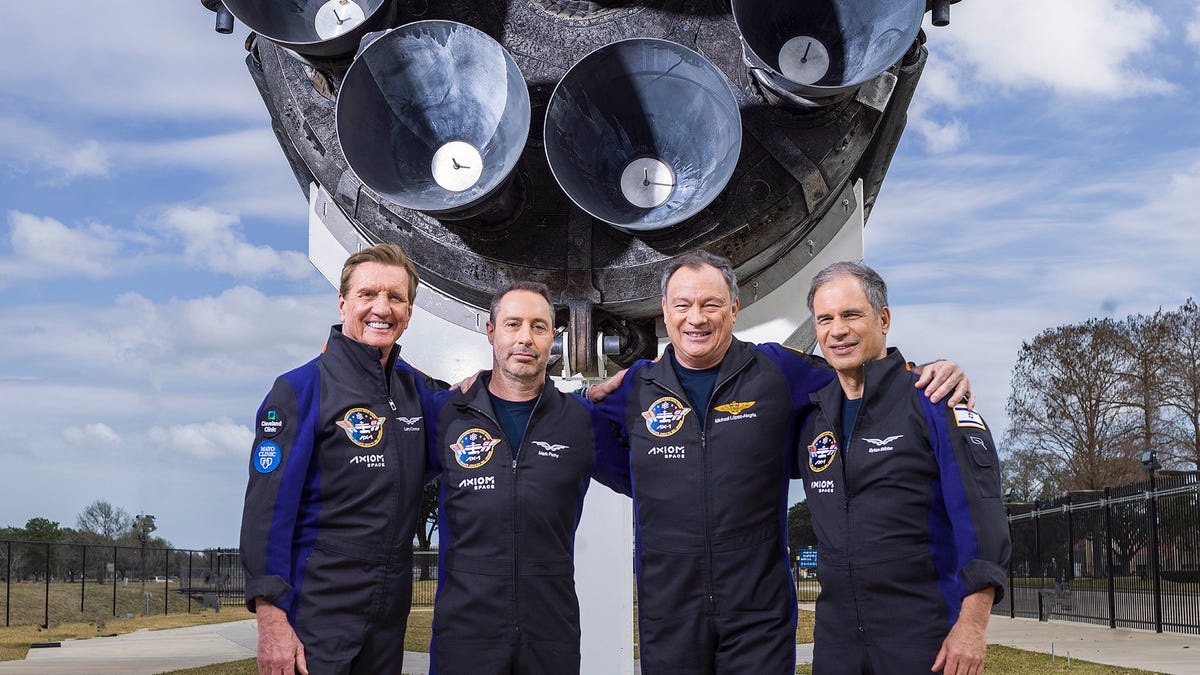Axiom-1 Private Space Crew Splashes Down Safely After Extended ISS Stay
The commercial crew spent over a week doing scientific research in space.

The crew of the AX-1 mission has returned home.
The first fully private crew to visit the International Space Station is now back on Earth after spending a week longer in orbit than planned.
A SpaceX Crew Dragon capsule carrying the four members of the Axiom Space AX-1 mission splashed down off the coast of Jacksonville, Florida, around 10 a.m. Monday. The spacecraft could be seen glowing white hot on thermal imaging cameras that tracked its descent as it sliced through the atmosphere, before being slowed by a series of parachutes in preparation for the water landing in the Atlantic Ocean.
With four parachutes deployed, the charred Dragon drifted for a few minutes before finally touching the ocean. The capsule bobbed on relatively calm waters as spotters on small motorboats circled it while awaiting larger recovery vessels to arrive on the scene and transport the astronauts to shore.
Splashdown of Dragon confirmed pic.twitter.com/m0C7GjwhYh
— SpaceX (@SpaceX) April 25, 2022
The commercial spacecraft was commanded by former NASA astronaut Michael Lopez-Allegria alongside American pilot and adventurer Larry Connor, Canadian entrepreneur and executive Mark Pathy and investor and former fighter pilot Eytan Stibbe, who became the first Israeli astronaut on the ISS.
Connor reported from the capsule that the Crew Dragon was stable, though the crew was having a hard time seeing out the windows. He also thanked the mission team for an "amazing job and amazing mission."
Larry Connor flips aboard the ISS.
The quartet blasted off from Kennedy Space Center in Florida on April 8. The mission called for spending a total of 10 days in orbit, including eight days on the ISS. But thanks to rough or uncertain weather off the coast of Florida, their return was delayed multiple times. In the end, the crew spent 15 days on the ISS in total, and 17 days in space.
During that time, the crew completed 240 orbits of Earth, traveling over 6 million miles. They also spent about 14 hours a day doing science, and completed over two dozen research projects, whose topics ranged from air purification systems to cancer to self-assembling robots.
Axiom aims to send private and professional astronauts to the ISS as often as twice a year as it prepares to launch its own space station modules, currently set to attach to the ISS as soon as 2024. When the ISS is retired in 2031, Axiom is planning for the Axiom Station to become its own free-flying private space station.

